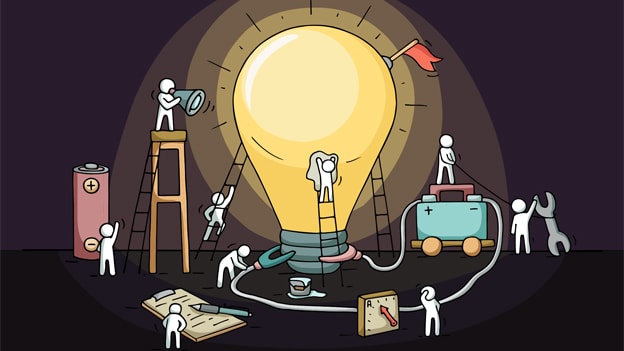Blogosphere: To innovate, get physical

What does hyper-connectivity mean to the world of innovation? Does it increase the pace of innovation or sets in hysteria? I reckon that while connectivity helps get more ideas, too much of it hampers execution. And since innovation is more to do with execution of ideas than generation, hyper or virtual connectivity isn’t great for it. Here’s my reasoning.
Imagine a world where everyone is connected to everybody else, both dead and alive (no pun intended). Needless to say, we are talking more of virtual communication, over emails and advanced versions thereof, for that’s the only way that connectivity of an exponential nature could be achieved. One must, however, appreciate that virtual connectivity doesn’t augment physical connectivity, but instead, displaces it, cannibalizes it as, after all, we are seeking a piece of the same mindshare and time. That’s my point of contention here — how connectivity hampers our ability to be creative and generate innovative outcomes.
A greater engagement in the virtual world comes at the cost of time, attention, and emotions of the physical world
The process of innovation is a three-stage process: Discovery, Ideation, and Validation. In the discovery stage, the intent is to understand the problem in its context and go to the root-cause to redefine it in a sharper manner. The ideation stage then looks into generating probable solutions to the problem, which then gets pruned in the validation stage. Though the journey looks linear, it is, in fact, iterative in nature, with numerous failed starts and unfinished ends.
To what extent does virtual connectivity impacts each of the three stages of innovation?
Discovery, which is the most crucial of the stages of problem-solving and innovation (I am loosely using these concepts interchangeably here), starts with soaking oneself into the context of the problem. The real ‘insights’ will remain elusive till such time one is right in the context, next to the subject and experiencing the pain first-hand. Virtual reality, augmented reality and other fancy technologies are a far cry. Our inability to solve the problems around poverty, pollution, sanitation, healthcare, universal education et al., does not stem so much from lack of resources as much from our lack of understanding of the problems, in context. The concerns at the workplaces are no different.
Coming to ideation, more is always better. We are in the space of Open Innovation, where ideas, talent, and capital can come from pretty much any part of the world, and the organizational boundaries remain porous. The hyper-connectivity, both virtual and real, helps generate ideas, for now, you can access knowledge pools, experts and content at a never before speed and marginal cost. So, for the ideation stage, more connectivity is always better.
Of course, the flip side of more ideas is that greater efforts are put in to validate those ideas. The perpetual paucity of resources, including market’s attention, always necessitates one to place the right bets. Culling out the signal from the noise needs patience, and calls for developing logic to screen ideas, one at a time. This calls for running experiments, building prototypes and engaging customers in validation concepts. The Internet does help in running such A/B test, reaching out to a large pool of potential buyers and influencers, and the Big Data helps do number churning; however, there is a huge value in watching customer experience the product, speaking to those in person, and being in proximity of the action.
On the whole, virtual connectivity helps enormously in seeking a larger and more diverse set of ideas but doesn’t act as a panacea for generating great insights and validating concepts. For the other crucial stages of innovation, being physical has enormous value. So, to innovate – get physical.














